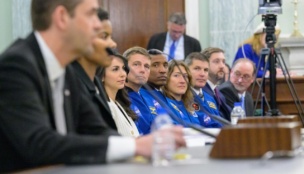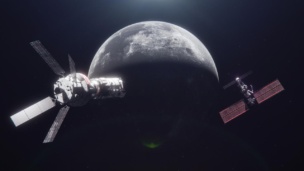Once every blue moon ten years, NASA tasks the National Academies of Science, Engineering and Medicine with determining the highest-priority planetary science missions for the next decade. The Academies published the fruits of their labor– “Origins, Worlds, and Life: A Decadal Strategy for Planetary Science and Astrobiology 2023-2032”—yesterday, revealing a new ranked menu of deep-space priorities.
The survey: The National Academies received hundreds of white papers from the planetary science community, making the case for the relevance and importance of various missions to each planet in the Solar System. The completed survey makes recommendations for the highest-priority missions and how to earmark for them.
The next NASA flagship
NASA’s next big destination after the Red Planet will be the ice giant, Uranus. The decadal survey recommended that NASA send an orbiter and probe to Uranus (*insert Uranus probe joke here*), which has not been visited by a spacecraft since Voyager 2’s flyby in 1986. The second highest priority is the Enceladus Orbilander, which would send a spacecraft to the ocean moon of Saturn.
- The survey committee had to decide between Uranus and Neptune as the next destination. Ultimately it came down to mission readiness: no new technology would need to be developed for missions to Uranus, and the committee saw no reason that NASA shouldn’t start on the project right away.
- The Uranus and Enceladus missions were priorities No. 3 and 4 in the last decadal survey, behind a Mars rover and Europa mission. They’ve now been bumped to the first two spots.
DEIA considerations
For the first time, the survey looked at the state of the planetary science profession, and made recommendations based on NASA’s diversity, equity, inclusion and accessibility (DEIA) needs.
- “While scientific understanding is the primary motivation for what our community does, we must also work to boldly address issues concerning our community’s most important resource — the people who propel its planetary science and exploration missions,” said Philip Christensen, steering committee co-chair.
Planetary defense
Everyone’s favorite potentially-dangerous-asteroid-tracking department got a shoutout from the survey. The committee emphasized the need for NASA to improve its Near-Earth Object (NEO) tracking capabilities, and outlines its top priority missions:
- The NEO Surveyor mission, a mid-infrared instrument dedicated NEOs
- Completing the Direct Asteroid Redirection Test (DART)
- Up next: a flyby recon mission of an asteroid 50-100m in diameter.
The wishlist: If there’s more to go around, the survey recommends the following missions to flesh out the agency’s planetary science portfolio: a Centaur Orbiter and Lander, Ceres sample return, comet surface sample return, an Enceladus multi-flyby, the Lunar Geophysical Network, a Saturn probe, Titan orbiter, and Venus In Situ Explorer.
Exploration: The survey committee continues to recommend Mars and lunar exploration. The Mars Exploration Program (MEP) and Lunar Discovery Exploration Program (LDEP) should be dedicated programs. The Mars Life Explorer (MLE) is the next priority for MEP, and Endurance-A, a high-endurance lunar rover, is next up for LDEP.
Correction: A previous version of this story said that Voyager made its flyby of Uranus in 1896. The error has been corrected.




